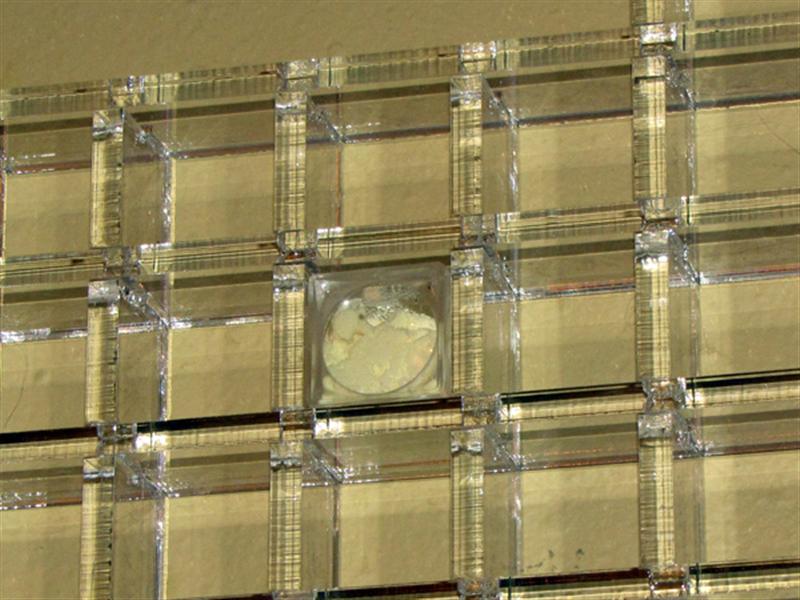Every chemist (and arguably every scientist, and arguably everyone else in the world), whether amateur or professional, should have an elements collection. Theodore Gray has written eloquently about the hows and wherefores of collecting the chemical elements, so I won’t belabor the point here other than to say: chemistry has been called the central science, and arguably, chemistry’s greatest achievement has been the discovery of the chemical elements, the realization of the periodicity of their properties and its implications for atomic structure, and the isolation of each of those elements in its pure or “standard” state. Collecting the individual elements lets you participate in that incredible story in a way that no amount of book-learnin’ ever will.
When I first started collecting elements six years ago, as an undergraduate chemist, I stuffed them into vials in a shoebox on the top shelf of my closet. As my collection grew, I began to consider the problem of properly storing and displaying them. It’s an ongoing problem for any element collector. Many elements, in their standard states, are rare, reactive, radioactive, or some combination of the three. I don’t claim to have solved all the problems associated with collecting the elements, and would be the first to admit that there are some elements my collection will almost certainly never contain. But what I have learned is this: generally speaking, smaller is better. Smaller element samples are cheaper, and in the case of reactive or radioactive elements, less hazardous. I very much admire Theo Gray’s Periodic Table Table, but for my purposes, it’s much too big to be practical.
About two years ago, it first occurred to me that what I wanted to display my elements was something like a spice rack, but in the shape of the periodic table. I looked around online for a suitable commercial product and couldn’t find one at a reasonable price that met my expectations. So I decided to build my own. This article is about how I did it. The finished cabinet measures 24×9.5×1.1″, but I think when I do it again, I’ll make it only 3/4″ thick (see below).
Now, some of you may protest that this project amounts to “1. Have a bunch of parts laser cut. 2. Glue them together.” A fair criticism. But this is just a prototype really, and there are lots of ways to skin a cat. If you don’t have access to and/or don’t want to pay for laser-cutting services, there are other ways to make these parts, and I’ve provided the plans and critical dimensions. If you have the tools and the skills, for instance, it would be straightforward to make the pieces from wood, and I’ve included some thoughts on how it might be done below. And, as always, if you have suggestions about how to do this cheaper or better, by all means leave me a comment.
















